A concave mirror and a converging lens (glass with ) both have a focal length of 3 cm when in air. When they are in the water , their new focal length are:
1.
2.
3.
4.

To unlock all the explanations of 6 chapters you need to be enrolled in MasterClass Course.

To unlock all the explanations of 6 chapters you need to be enrolled in MasterClass Course.
A soldier directs a laser beam on an enemy by reflecting the beam from a mirror. If the mirror is rotated by an angle , by what angle will be reflected beam rotate?
1. /2
2.
3. 2
4. None of these

To unlock all the explanations of 6 chapters you need to be enrolled in MasterClass Course.

To unlock all the explanations of 6 chapters you need to be enrolled in MasterClass Course.
When an object is at a distance of from the poles of a concave mirror, images of the same size are formed. The focal length of the mirror is:
1.
2.
3.
4.

To unlock all the explanations of 6 chapters you need to be enrolled in MasterClass Course.

To unlock all the explanations of 6 chapters you need to be enrolled in MasterClass Course.
A given ray of light suffers minimum deviation in an equilateral prism P. Additional prism Q and R of identical shape and of the same material as P is now added as shown in the figure. The ray will now suffer:
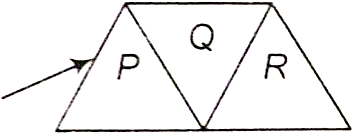
1. greater deviations
2. no deviation
3. same deviation as before
4. total internal reflection

To unlock all the explanations of 6 chapters you need to be enrolled in MasterClass Course.

To unlock all the explanations of 6 chapters you need to be enrolled in MasterClass Course.
For a spherical mirror, the graph of 1/v versus 1/u is given by:
1. 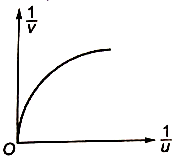
2. 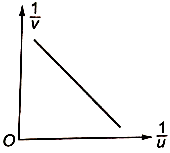
3. 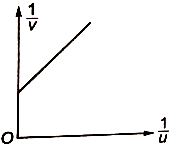
4. 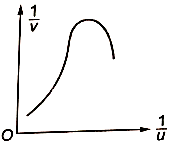

To unlock all the explanations of 6 chapters you need to be enrolled in MasterClass Course.

To unlock all the explanations of 6 chapters you need to be enrolled in MasterClass Course.
The focal length of the objective and the eyepiece of a microscope are 4 mm and 25 mm respectively. If the final image is formed at infinity and the length of the tube is 16 cm, then the magnifying power of the microscope will be:
1. -327.5
2. -3.75
3. 3.3275
4. 32.75

To unlock all the explanations of 6 chapters you need to be enrolled in MasterClass Course.

To unlock all the explanations of 6 chapters you need to be enrolled in MasterClass Course.
The figure shows a concavo-convex lens. What is the condition on the refractive indices so that the lens is diverging?
1.
2.
3.
4. None of these

To unlock all the explanations of 6 chapters you need to be enrolled in MasterClass Course.

To unlock all the explanations of 6 chapters you need to be enrolled in MasterClass Course.
Statement I: If a source of light is placed in front of the rough wall its image is not seen.
Statement II: The wall does not reflect light.
1. Statement I is true, statement 2 is true; statement 2 is the correct explanation for statement I
2. Statement 1 is true, statement 2 is true; statement 2 is not the correct explanation for statement 1
3. Statement 1 is true, statement 2 is false.
4. Statement 1 is false, statement 2 is true
A thin prism having refracting angle 100 is made of glass of refractive index 1.42. This prism is combined with another thin prism of a glass of refractive index 1.7. This combination produces dispersion without deviation. The refracting angle of the second prism should be:-
1.
2.
3.
4.

To unlock all the explanations of 6 chapters you need to be enrolled in MasterClass Course.

To unlock all the explanations of 6 chapters you need to be enrolled in MasterClass Course.
In an astronomical telescope in normal adjustment, a straight line of length L is drawn on inside part of the objective lens. The eye-piece forms a real image of this line. The length of this image is I. The magnification of the telescope is :
1.
2.
3.
4.

To unlock all the explanations of 6 chapters you need to be enrolled in MasterClass Course.

To unlock all the explanations of 6 chapters you need to be enrolled in MasterClass Course.







